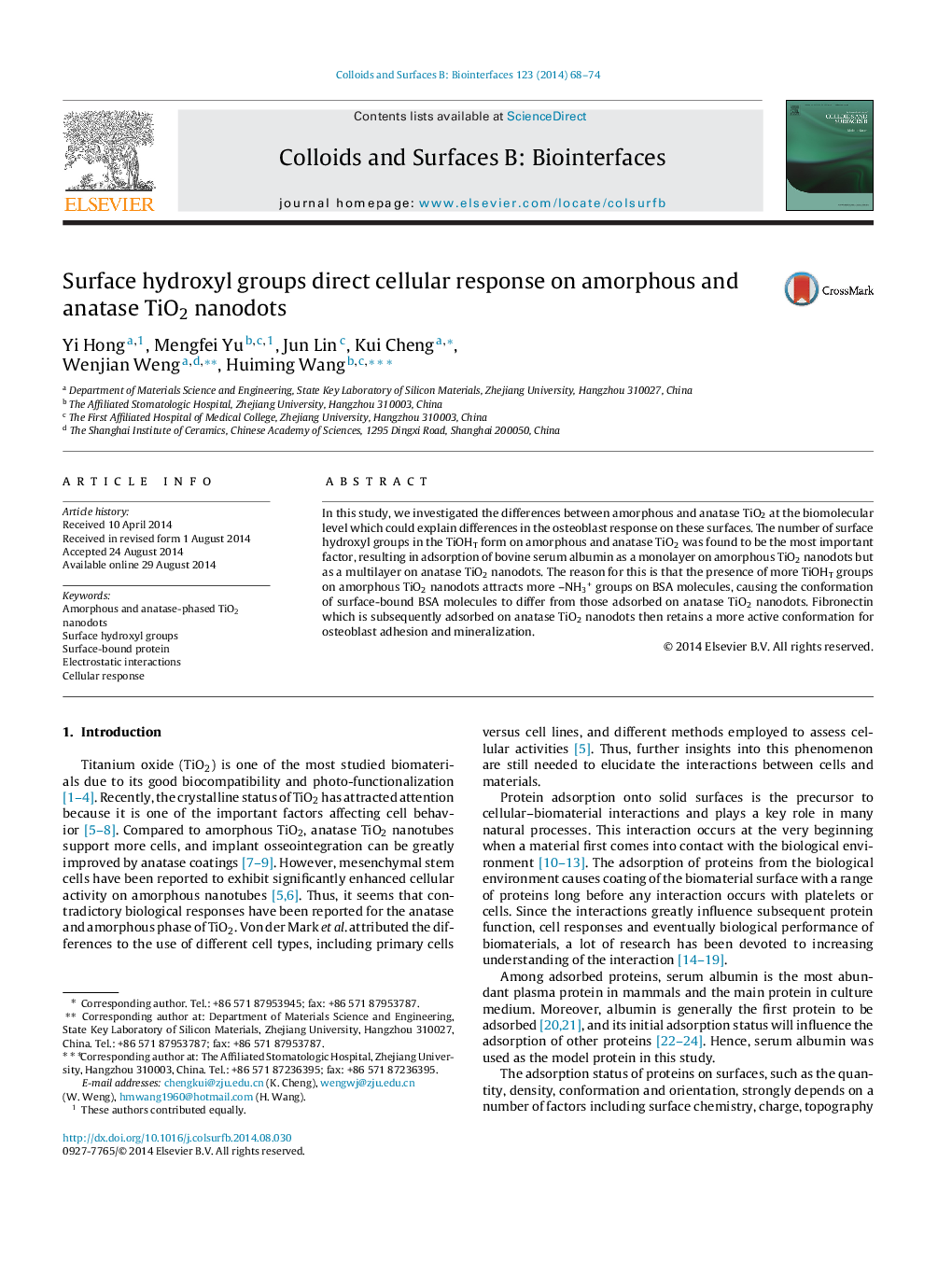| Article ID | Journal | Published Year | Pages | File Type |
|---|---|---|---|---|
| 599469 | Colloids and Surfaces B: Biointerfaces | 2014 | 7 Pages |
•Osteoblast adhesion and mineralization are better on anatase TiO2 nanodot films.•Status of protein adsorbed on amorphous and anatase TiO2 nanodots are different.•Fibronectin adsorbed on anatase TiO2 nanodots retains a more active conformation.•TiOHT on amorphous and anatase TiO2 is the major factor for protein adsorption.•Adsorption state of BSA is related to the amount of TiOHT via electrostatic forces.
In this study, we investigated the differences between amorphous and anatase TiO2 at the biomolecular level which could explain differences in the osteoblast response on these surfaces. The number of surface hydroxyl groups in the TiOHT form on amorphous and anatase TiO2 was found to be the most important factor, resulting in adsorption of bovine serum albumin as a monolayer on amorphous TiO2 nanodots but as a multilayer on anatase TiO2 nanodots. The reason for this is that the presence of more TiOHT groups on amorphous TiO2 nanodots attracts more –NH3+ groups on BSA molecules, causing the conformation of surface-bound BSA molecules to differ from those adsorbed on anatase TiO2 nanodots. Fibronectin which is subsequently adsorbed on anatase TiO2 nanodots then retains a more active conformation for osteoblast adhesion and mineralization.
Graphical abstractFigure optionsDownload full-size imageDownload as PowerPoint slide
